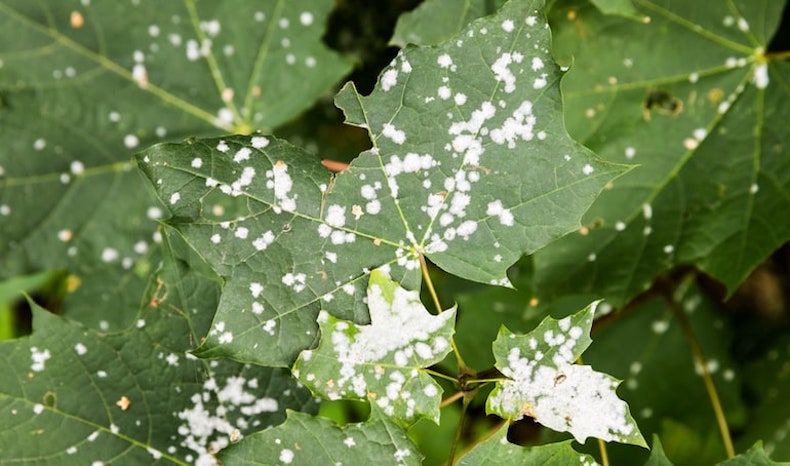Fungal infections in plants are pervasive challenges that affect gardens, farms, and the delicate balance of ecosystems. Understanding the common types of fungal infections, their symptoms, and their management is crucial for any aspiring horticulturist or environmental steward. This article will delve into the intricacies of various fungal pathogens, their impact on plant health, and ways to mitigate their effects.
The emergence of fungal diseases has escalated in recent years, largely due to environmental stress factors, monoculture practices, and climate change. Young plants are particularly susceptible as they often have not fully developed their defense mechanisms. Consequently, addressing these pathogens is vital not just for aesthetic purposes, but for sustaining biodiversity and ensuring the productivity of agricultural systems.
Identifying common fungal infections and understanding their life cycles can empower gardeners to take proactive measures. Through vigilant observation and strategic management, one can not only preserve plant health but also foster an environment that minimizes future outbreaks.
Understanding Fungal Pathogens and Their Life Cycles
Fungi are a diverse group of organisms characterized by their unique cellular structure and reproductive strategies. Understanding their life cycles is essential for effective management. The majority of pathogenic fungi reproduce via spores, which can be dispersed by wind, water, or insects. This resilience allows them to inhabit a wide array of environments.
Fungal pathogens often enter plants through wounds or natural openings. Once inside, they can proliferate rapidly, leading to significant tissue damage. The ability of fungi to infect various plant types complicates management strategies, as different species may showcase differing responses to treatments.
Indicators of Fungal Infections: Symptoms and Signs
Visual signs of fungal infections can manifest in various forms, from powdery mildew to root rot. Recognizing these symptoms early is paramount to controlling the infection.
1. **Powdery Mildew**: A ubiquitous fungal disease, powdery mildew appears as white, powdery spots on leaves. These spots can expand, leading to leaf curling and premature shedding. The pathogenesis is favored by warm, dry conditions coupled with high humidity.
2. **Leaf Spots**: Leaf spot diseases can produce an array of symptoms depending on the fungal species involved. Typically, these will present as dark or water-soaked lesions that can debilitate plant foliage. Management often involves pruning infected areas and ensuring good air circulation.
3. **Rusts**: Rust fungi are notorious for their bright orange or yellow pustules on leaves and stems. These pustules release spores that can spread, causing systemic infections. Due to their complex life cycles, which may include multiple host plants, rusts can be particularly challenging to manage.
4. **Root Rot**: Root rot is an insidious affliction resulting from various fungi in saturated soil conditions. Often, plants may wilt or exhibit stunted growth, and by the time symptoms are apparent, significant root damage has occurred. Good drainage practices and avoiding overwatering are vital preventive measures.
5. **Botrytis Blight**: Commonly affecting plants during damp and cool conditions, Botrytis blight leads to grey mold on flowers and fruits. This disease is particularly damaging in greenhouse settings, where humidity levels can be poorly regulated.
Anatomy of Fungal Infections: Disease Progression and Consequences
The progression of fungal infections can vary widely based on environmental conditions and plant resilience. Once a pathogen establishes itself, it often enters a phase of rapid growth and reproduction. As the infection spreads, host plants can exhibit behavioral changes, including altered growth patterns and compromised resistance mechanisms.
The implications of untreated infections can be profound, resulting in decreased yield in agricultural settings, loss of aesthetic appeal in gardens, and potential loss of biodiversity in natural ecosystems. Understanding these consequences reinforces the need for prevention and control methods.
Prevention and Control Strategies: Empowering Young Horticulturists
For young gardeners and budding botanists, mastering prevention and control methods can spell the difference between a thriving garden and a plant graveyard. Integrating cultural, biological, and chemical control strategies fosters resilience and sustains plant health.
Cultural practices form the foundation of effective fungal disease management. Maintaining good garden hygiene is crucial; this includes cleaning up fallen leaves, providing adequate spacing for air circulation, and rotating crops to disrupt pathogen life cycles. Composting plant debris can further aid in the breakdown of fungal spores, thereby minimizing reinfection risks.
Biological control involves employing natural antagonists to combat fungal pathogens. For instance, introducing beneficial fungi or bacteria can suppress harmful fungal populations. Products such as Trichoderma spp. have shown promise in managing root rot and enhancing plant resilience.
Chemical controls, while sometimes necessary, should be approached with caution. Pesticides and fungicides should only be used judiciously, as they can disrupt beneficial organisms and contribute to resistance development in fungal populations. Always follow application guidelines and consider organic options as first-line treatments whenever feasible.
Engaging Younger Audiences: The Power of Education and Awareness
Captivating the younger generation’s interest in botany and plant health can have lasting benefits. Integrating educational programs into school curricula and providing hands-on gardening experiences can instill a sense of responsibility and respect for nature. Digital platforms, including social media and blogs, can help disseminate information about fungal infections, allowing for interaction and sharing successful management anecdotes.
Innovative approaches such as gamified learning experiences can further engage young audiences. Interactive apps that allow users to identify fungal symptoms and learn about control methods can transform plant care from a chore into an adventure. Encouraging the exploration of biodiversity in local environments can foster a deeper understanding of the interconnectedness of plants and pathogens.
Conclusion: Beyond the Spore
Common fungal infections present significant challenges to plant health, necessitating a comprehensive understanding of their life cycles, symptoms, and management practices. Engaging younger generations in the discourse surrounding fungal diseases is essential to fostering a more sustainable future for gardens, farms, and ecosystems. Through education and awareness, new horticulturists can cultivate a passion for plant health that echoes through generations, ensuring a resilient and vibrant natural world.
